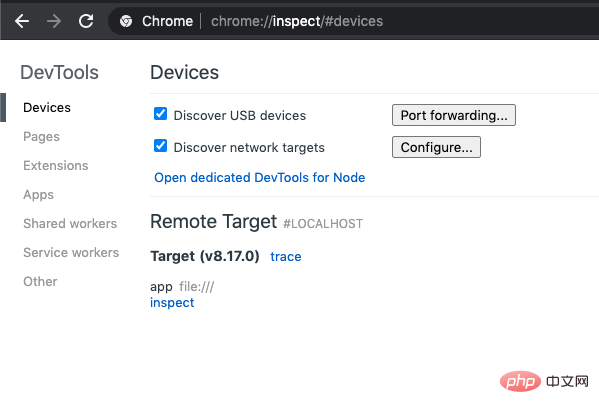Remote code execution vulnerability case analysis
0x01 Get to know mongo-express<br>
mongo-express is a MongoDB Admin Web management interface, written using NodeJS, Express, and Bootstrap3. Currently, mongo-express should be the MongoDB admin management interface with the most stars on Github. Easy to deploy and simple to use, it has become the choice of many people to manage mongo.

0x02 Set up debugging environment<br>
0x1 Start docker service<br>
Reading the official GitHub security announcement, we found The vulnerability affects all versions below 0.54.0. We chose 0.49 as an example for testing. Since this vulnerability environment also requires a MongoDB database, we can quickly build it by executing the following docker command:
Build a MongoDB database<br>
docker run --name test -d mongo:3.2
Build mongo-express containing the vulnerability and connect to the above MongoDB database:<br>
docker run -d -p 8081:8081 --link test:mongo mongo-express:0.49
Check the log to confirm that the connection is successful.

0x2 Turn on the nodejs debugging option<br>
There is a trick here. If you want to debug nodejs, you need to add the --inspect parameter when starting up. Make the following modifications to the docker startup script


<br>
Using the chrome plug-in, you can debug nodejs like debugging javascript scripts, and it is also very convenient to operate. First download the debug plug-in



<br>
<br>
 ##0x03 Vulnerability debugging and principle analysis
##0x03 Vulnerability debugging and principle analysis
<br>The principle of the vulnerability debugged this time is relatively simple. The core vulnerability is command splicing. This is the simplest form of vulnerability, but it requires some effort to exploit because it needs to bypass the sandbox VM. Fortunately, the nodejs VM Bypass the previous research basis. Without further ado, let’s just look at the final vulnerability code
 string is the parameter of toBSON. BSON is a common data format in MongoDB and is a close relative of JSON, but There are many differences from the data format of JSON. However, all BSON-related operations in mongo-express, such as creating a new document (similar to insertion operations in other databases), need to go through the toBSON() function.
string is the parameter of toBSON. BSON is a common data format in MongoDB and is a close relative of JSON, but There are many differences from the data format of JSON. However, all BSON-related operations in mongo-express, such as creating a new document (similar to insertion operations in other databases), need to go through the toBSON() function.
For example, the following operation
 When the code flow reaches bson.toBSON, the eval function will be triggered. Because nodejs can be used as a back-end language, the eval function is Running on the server side can cause command injection and harm the system.
When the code flow reaches bson.toBSON, the eval function will be triggered. Because nodejs can be used as a back-end language, the eval function is Running on the server side can cause command injection and harm the system.
<br>
<br>
exp.checkValid = function (req, res) {var doc = req.body.document;try { bson.toBSON(doc);} catch (err) { console.error(err); return res.send('Invalid');}res.send('Valid'); };
<br>
exports.toBSON = function (string) { var sandbox = exports.getSandbox(); string = string.replace(/ISODate\(/g, 'new ISODate('); string = string.replace(/Binary\(("[^"] "),/g, 'Binary(new Buffer($1, "base64"),'); vm.runInNewContext('doc = eval((' string '));', sandbox); return sandbox.doc;};
According to code source analysis, the parameter string of toBSON is the document in req.body, so we can control this part. You can find the vm.runInNewContext function, which is a virtual sandbox. Therefore, we will analyze how to bypass sandbox protection in the next section.
0x04 nodejs sandbox bypass<br>
A sandbox is an independent environment that can safely execute untrusted code without affecting the actual external code. Code execution is often restricted in a sandbox. The VM module provides an API for compiling and running code in the context of a VM virtual machine. Use the VM module to run code in a sandbox environment. The running code uses a different V8 context, that is, its global variables are different from other code. But code in the sandbox can still access the Node process. We often use this method to bypass.
0x1 Phenomenon<br>
vm.js
<br>
<br>
"use strict";const vm = require("vm");const xyz = vm.runInNewContext(` this.constructor.constructor('return this.process.env')()`);console.log(xyz);

You can see this.process.env The nodejs process information is obtained, which shows that it is completely possible to switch back to the main program to execute system commands.
0x2 Explanation<br>
In javascript this points to the object it belongs to, so when we use it, it already points to an object outside the VM context. Then the .constructor that accesses this returns Object Constructor, and the .constructor that accesses Object Constructor returns Function constructor. Function constructor is like the highest function in javascript which allows global access. The Function constructor allows generating functions from strings, thereby executing arbitrary code. So we can use it to return to the main process. We can then use it to access the main process and perform RCE.
<br>
<br>
"use strict";const vm = require("vm");const xyz = vm.runInNewContext(`const process = this.constructor.constructor('return this.process')(); process.mainModule.require('child_process').execSync('cat /etc/passwd').toString()`);console.log(xyz);
Similarly, the vm2 function can also be bypassed, Let’s study by referring to the original text https://pwnisher.gitlab.io/nodejs/sandbox/2019/02/21/sandboxing-nodejs-is-hard.html
0x05 Vulnerability patch<br>


Here are two pictures to illustrate everything. Use mongo-query-parser to parse BSON data and replace it directly from the source.
The above is the detailed content of Remote code execution vulnerability case analysis. For more information, please follow other related articles on the PHP Chinese website!

Hot AI Tools

Undresser.AI Undress
AI-powered app for creating realistic nude photos

AI Clothes Remover
Online AI tool for removing clothes from photos.

Undress AI Tool
Undress images for free

Clothoff.io
AI clothes remover

Video Face Swap
Swap faces in any video effortlessly with our completely free AI face swap tool!

Hot Article

Hot Tools

Notepad++7.3.1
Easy-to-use and free code editor

SublimeText3 Chinese version
Chinese version, very easy to use

Zend Studio 13.0.1
Powerful PHP integrated development environment

Dreamweaver CS6
Visual web development tools

SublimeText3 Mac version
God-level code editing software (SublimeText3)

Hot Topics
 1389
1389
 52
52


